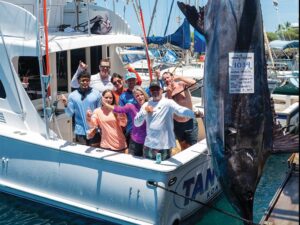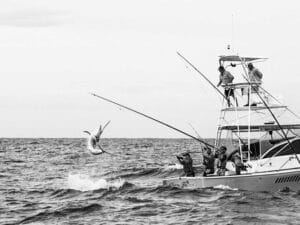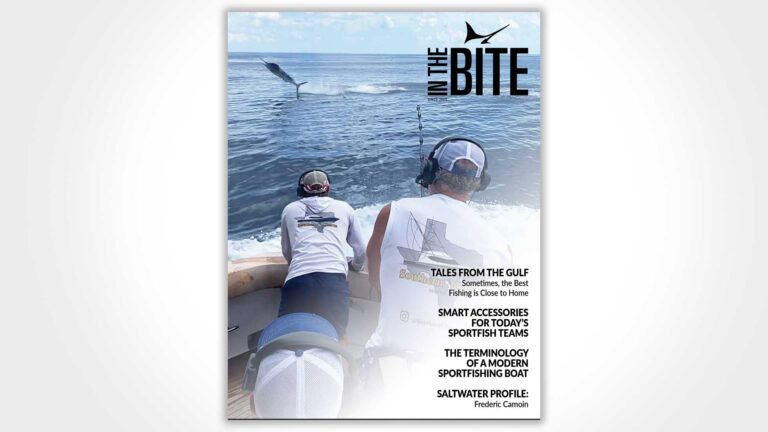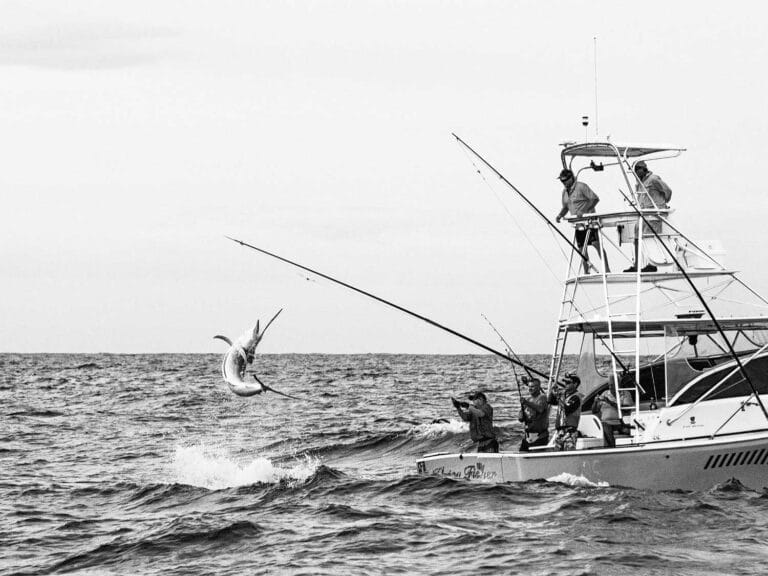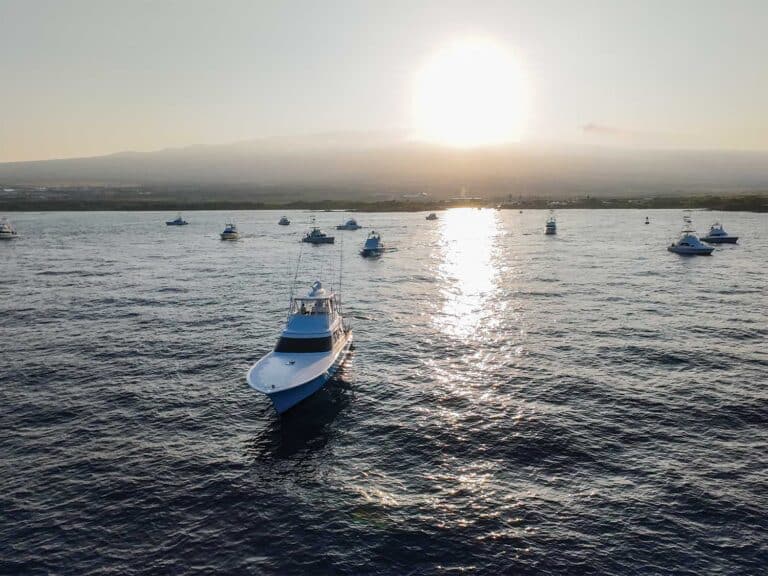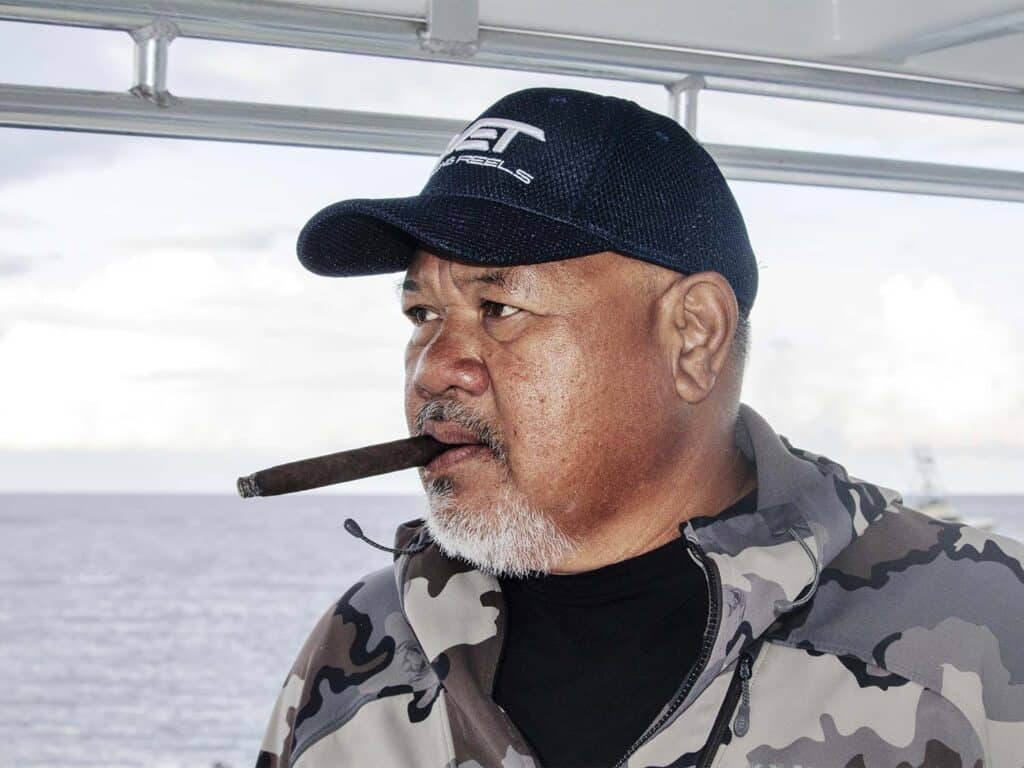
Subscribe to Marlin magazine and get a year of highly collectible, keepsake editions – plus access to the digital edition and archives. Sign up for the free Marlin email newsletter.
From chasing giants to mentoring the next generation, Capt. Bomboy Llanes embodies the spirit of Kona’s legendary big-game culture. A fourth-generation Kona fisherman, Bomboy is about as authentic as they come. A renowned captain, lure-maker, taxidermist, and lifelong hunter and angler, Bomboy is both a fixture in the Kona billfish scene and an industry player—known as much for his contagious personality as he is for his two grander blue marlin. I had the opportunity to fish aboard Terminator with Bomboy during the Kona Kick-Off, where we talked about his proud Hawaiian roots, his mentors, the pursuit of giant marlin, and what comes next.
Q: What’s your earliest memory of fishing?
A: I’ve been on boats since before I could walk. My dad and grandfather were both commercial and recreational fishermen, so it was in my blood from day one. We’re a fishing family—always have been. My dad, who’s still going strong at 85, is the oldest captain in the harbor. He and my grandfather taught me everything: how to read the water and currents, how to look for signs, how to respect the ocean. By the time I was 15, I was running charters by myself, even though I wasn’t supposed to be!
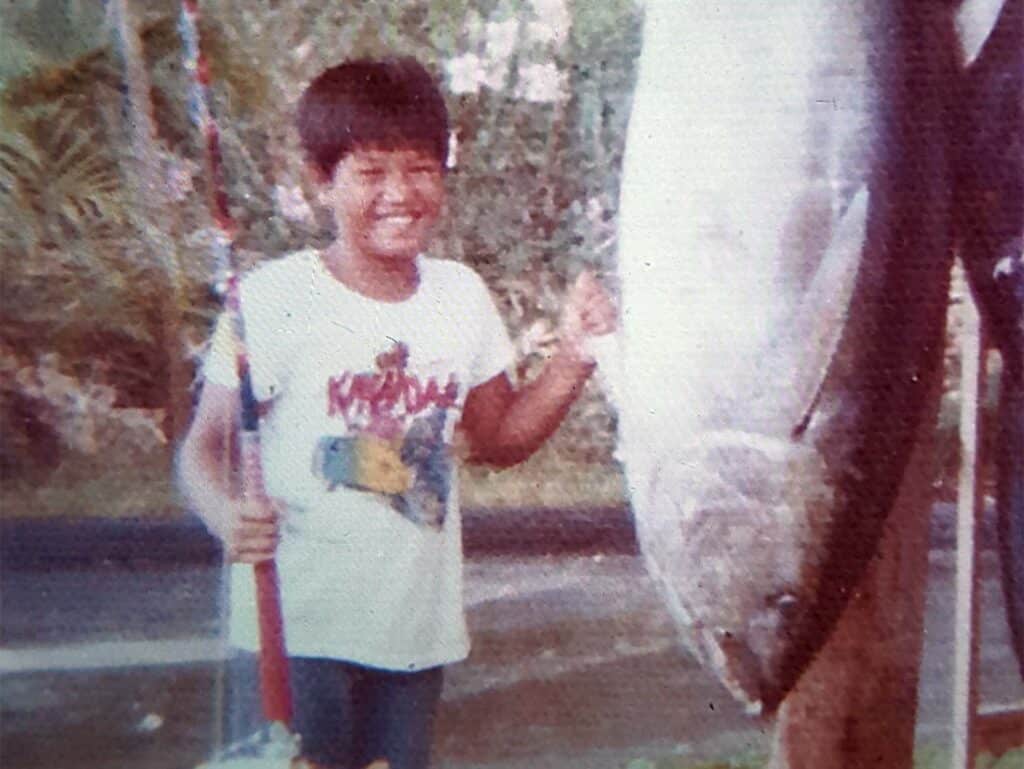
Q: Who were some of your biggest influences coming up?
A: Definitely my dad. He’s the one who taught me to look beyond just the fish and understand what’s happening out there. But I also looked up to guys like Peter Hoogs, Jeff Fay and Gene VanderHoek. They were always working, always catching big fish. And they took the time to teach. We all learned from each other in those days. That’s something that stuck with me, and I am always willing to share information with younger guys coming up. Something that makes me proud is seeing guys running boats who used to work for me, such as Cyrus Hem on Kraken, David Borges on Kona Dream, and Nate Figueroa on Lei’n Low. Those guys put in the work. They’re solid.
Q: You’ve caught two granders. What does it take to land a giant blue marlin?
A: Man, those fish are something else. I knew they were over the mark as soon as I saw them jump. I was close on a couple more, but they’re just so f—ing strong, you know? And getting a solid hook-set on a big fish is always hard. There are some amazing captains that fish here their whole lives and never get a grander, so there’s something more than skill involved in it.
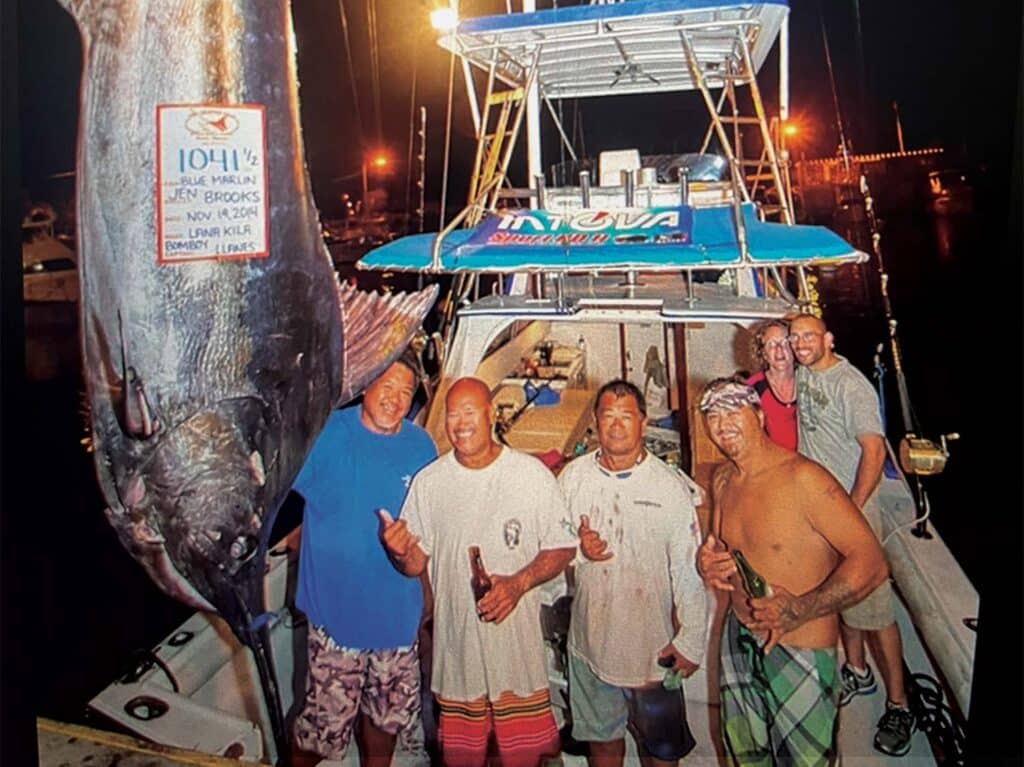
Q: You’ve had offers to run boats elsewhere. Why do you stay in Kona?
Kona’s got it all—calm seas, deep water close to shore, and fish year-round. But more than that, it’s my home. There’s a culture here, a way of doing things that I love. For people not from Kona, that is hard to understand. And I’ve got no issue with people coming from the mainland. I love all people, man. But you’ve got to respect how things are done here. Don’t try to change us—just be part of it. That’s just common sense wherever you go.
Q: You’re known for your taxidermy, lures and art too. How do those passions fit in with your fishing?
A: They’re all connected. I’m a hunter and a fisherman. Whether I’m cleaning up a head mount, making a lure, or chasing goats in the mountains, it’s about respect for the animal, the process and the culture. I remember hating it when my dad used to make me stay home and work on mounts or lures when I wanted to go play with my friends. But now I see the value. And when I see my dad, I tell him that, and he just laughs. I’d rather teach kids how to fish or carve than hang out downtown. And living in Hawaii isn’t cheap either! Having several incomes helps me afford it.
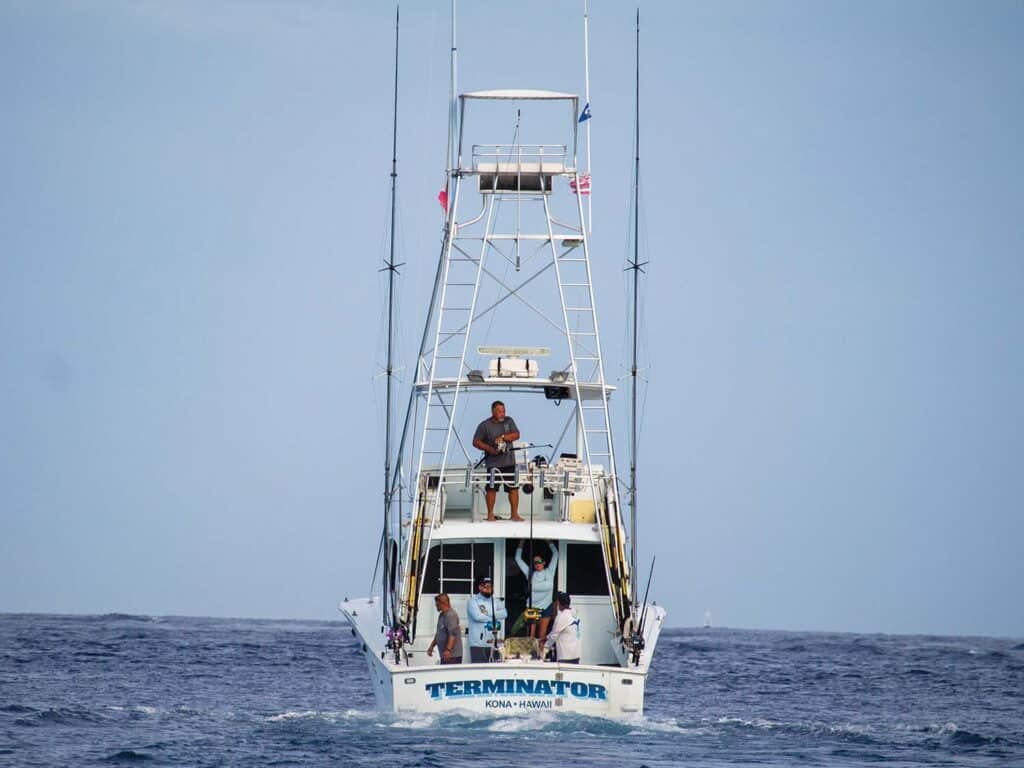
Q: Do you see changes in the fishery compared to back in the day?
A: For sure. In the ’70s and ’80s, a 600-pounder might only get you fifth place. Now that fish could win a tournament. There’s definitely been a decline in numbers, especially big ones. I think the offshore FADs set by commercial guys are holding fish way offshore, out of reach. But all that said, I still think Kona’s the best place for giant blues.
Q: In Hawaii, it’s common to harvest marlin. What do you say to those who criticize this?
A: We don’t waste anything here. If we kill a fish, it’s eaten and shared with the community. But I always honor the customer’s wishes. If they want to release it, we do. Simple as that. I had a client release what would have been my biggest fish—probably around 1,300 pounds. It would not have been my choice, and there may have been a little pleading on my part with the customer, but ultimately, the fish swam away.
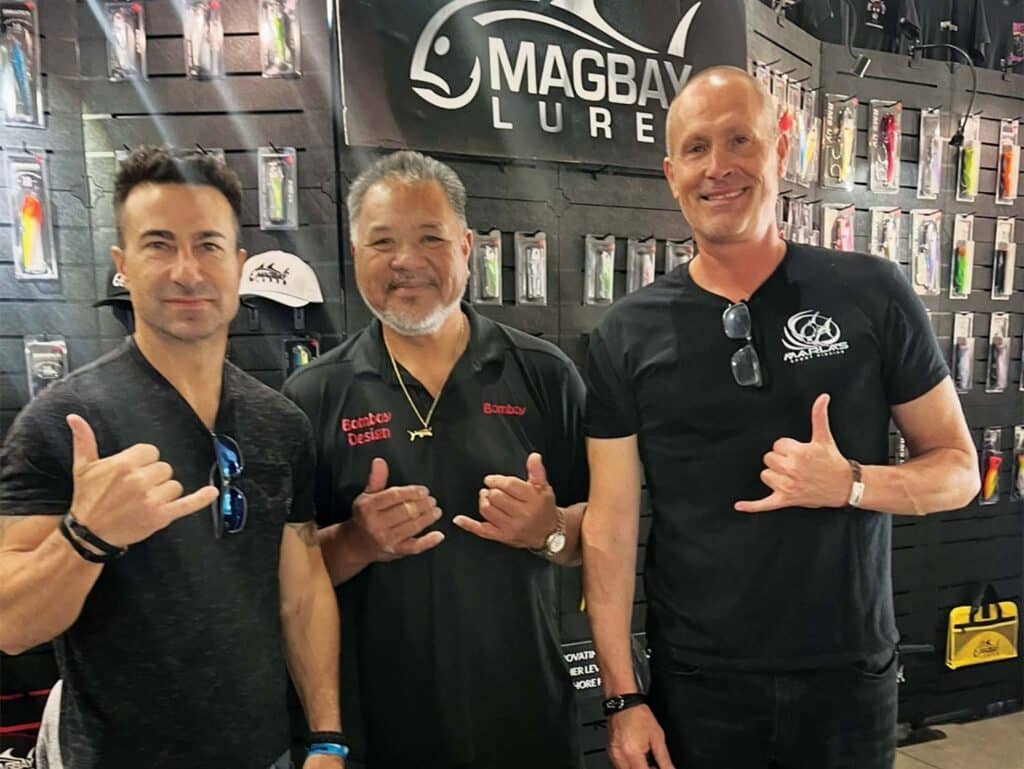
Q: What’s next for you?
A: I’m expanding my lure business, Bomboy Lures. I’ve been doing everything myself for so long, but I’ve recently partnered with MagBay Lures, which has a much larger network and infrastructure—not just me in my shop. I’m really excited about this next step.
But my main goal is, and has been for some time, to catch the biggest f—ing blue marlin ever. I’ve seen the fish, had her hooked. I’m not done yet. No, sir!
